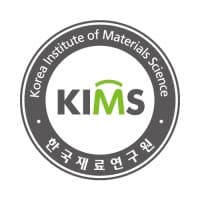Elastomers and Rubbers FE Analysis
BanuMusa R&D company provides testing, calibration, and FEA analysis of elastomers and rubbers for industrial and research purposes. The FEA simulation of hyperelastic materials requires a sufficient understanding of the complex behavior of these materials and the determination of the parameters relevant to each material model according to the purpose of the design.
There are several models for the FEA simulation of Hyperelastic and Hyperfoam in Abaqus, Ansys, LS-DYNA, and MSC-Marc. Neo-Hookean, Mooney-Rivlin, Ogden, Yeoh, Marlow, and Arruda-Boyce models are the most commonly used hyperelastic material models.
The following steps will be performed carefully and accurately for the finite element analysis of rubber materials:

- Determine the appropriate hyperelastic or viscoelastic material model for your rubber
- Mechanical testing services
- Provide standard hyperelastic material models (Neo-Hookean, Mooney-Rivlin, etc.)
- Computational modeling of materials
- Conduct virtual material tests to determine model coefficients
- Material calibration
- Set up and run the FEA simulations of your rubber component
- Fatigue, fracture, damage & failure analysis
- Validate and optimize the model based on your test data and requirements
- Report key results like displacements, stresses, and strains
Elastomers and Rubbers Material Testing
In the simulation of large strain response of elastomeric materials and rubber, it is very important to determine the material properties. The material must be tested in such a way that all deformation modes are extracted according to the design requirements of the component. So, we perform the following tests using finite element analysis to determine the deformation states of the material.
- Uniaxial Tensile Test (ISO 37)
- Uniaxial compression test (In some cases, this test has advantages over other tests)
- Shear test
- Volumetric test (to simulate hydrostatic pressure)
- Hysteresis testing to measure the energy dissipation
Several material testing standards are commonly used for elastomers and rubbers:
• ASTM D412 – Standard test methods for vulcanized rubber and thermoplastic elastomers in tension. This covers tensile testing to determine properties like:
- Tensile strength
- Elongation at break
- Secant modulus
- Stress-strain curve
• ASTM D395 – Standard test methods for rubber property – compression set. This covers compression set testing to determine the amount of permanent set after deformation and relaxation.
• ASTM D624 – Standard test method for tear strength of conventional vulcanized rubber and thermoplastic elastomers. This covers die C tear testing to measure tear resistance.
• ASTM D2240 – Standard test method for rubber property – durometer hardness. This covers hardness testing using Shore A or Shore D durometers to determine relative hardness.
• ASTM D573 – Standard test method for rubber -determination of resilience by rebound. This covers resilience testing to determine the elastic energy recovery ability of elastomers.
• ASTM D429 – Standard test methods for rubber property – adhesion to rigid substrates. This covers peel and pull-off testing to determine adhesion to substrates.
• ISO 37 – Rubber, vulcanized, or thermoplastic – Determination of tensile stress-strain properties. This ISO test method is similar to ASTM D412 for tensile testing.
Verification & Validation
In the curve-fitting phase, single-element testing is performed in finite-element software such as Abaqus to correctly predict material behavior. After the single element test, experimental tests for the material are also used to further verify the model’s accuracy.
BanuMusa R&D Services
BanuMusa R&D Engineering Consultancy is recognized as a leading provider of Finite Element Analysis (FEA) and simulation services. With over 10 years of experience, BanuMusa has successfully applied FEA to solve complex engineering challenges across industries.
Our team of expert FEA consultants focuses on delivering accurate, validated simulation results that enable our clients to optimize designs, improve performance, and reduce costs.
Our methodical approach starts with clearly defining project objectives and establishing appropriate analysis models. We use our extensive software expertise to implement the best solutions in Abaqus, ANSYS, or Altair.
Throughout the project, we work closely with clients to ensure a full understanding of the application, tailored assumptions, and accurate representation of loads and boundary conditions.
Validation is key. We benchmark our models against physical test data to achieve a high level of confidence in the simulation results.
Our clients appreciate our thorough reporting of analysis methodologies, assumptions, results, and optimization recommendations.
Areas of Expertise:
- Hyperelastic modeling of rubber and elastomer components
- Acoustics and vibration analysis of structures and enclosures
- Fatigue life prediction and probabilistic design optimization
- Nonlinear analysis of composite materials and structures













